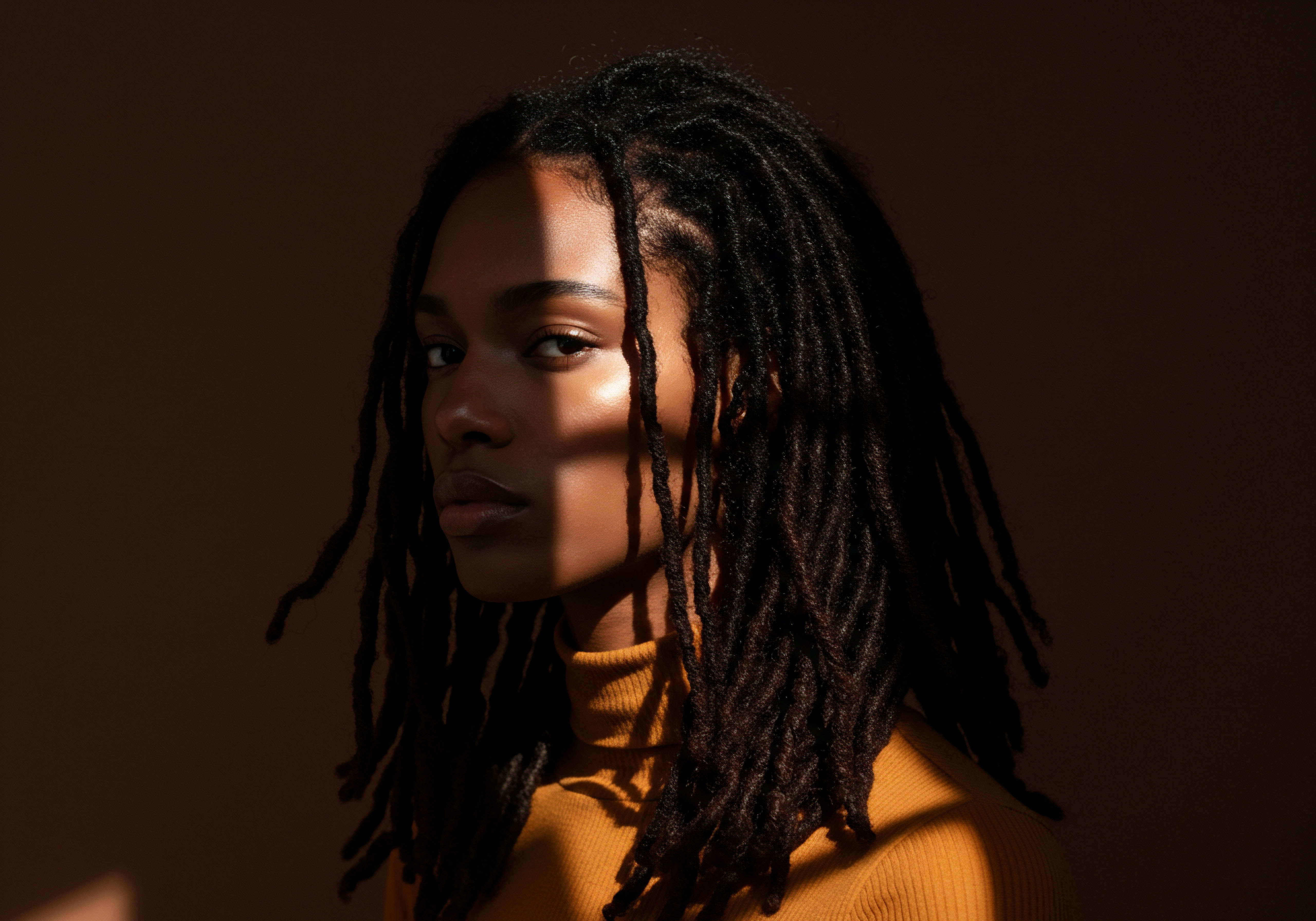
Roots
A quiet whisper of cloth, a soft assertion of heritage, often adorns the crown, telling tales without uttering a single sound. For Black women across generations and continents, the head wrap stands as a profound symbol, a visual language connecting the present to a vibrant past. This simple piece of fabric, artfully arranged, holds layers of history, cultural meaning, and personal identity. It is a testament to resilience, a beacon of beauty, and a continuous conversation with ancestry.
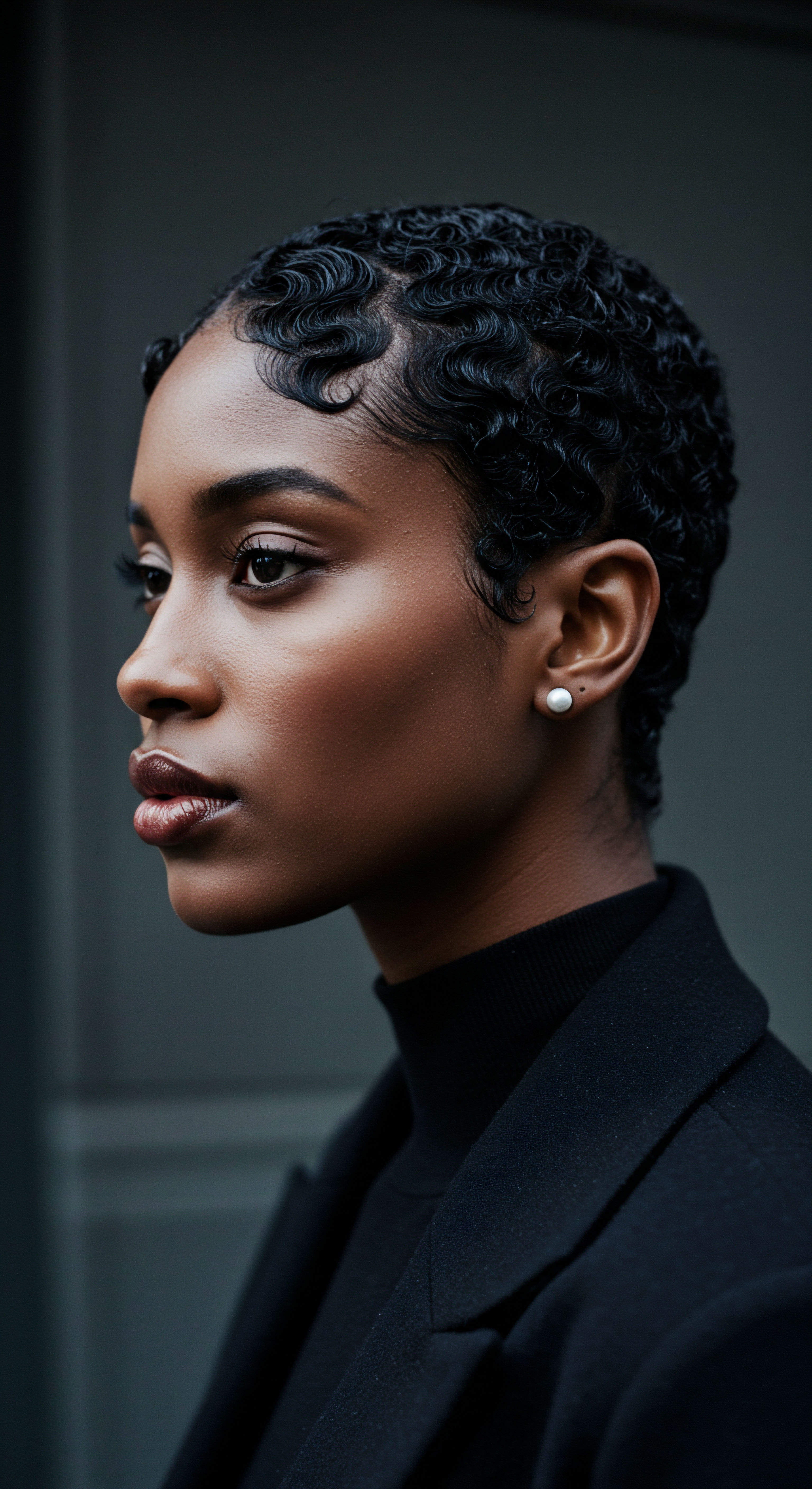
African Origins of Head Adornment
The practice of covering and adorning the head in Africa predates the transatlantic slave trade by centuries. Across diverse African societies, head coverings were not merely utilitarian; they were complex indicators of social standing, marital status, age, spiritual devotion, and tribal affiliation. From the elaborate gele of the Yoruba people in Nigeria to the intricate duku of Ghana and Zimbabwe, these head wraps showcased artistry and communal identity.
Fabrics, colors, and tying styles communicated specific messages within a community, acting as a living record of cultural norms and individual journeys. The very act of wrapping was often a ritual, passed down through generations, imbuing each fold with significance.
The head wrap serves as a visual lexicon, silently articulating narratives of identity and continuity across generations.
Consider the symbolism woven into the earliest forms of head adornment. In many West African traditions, the head was considered the most sacred part of the body, the seat of spiritual power and wisdom. Protecting it, therefore, held deep spiritual weight.
Head wraps served as a physical and symbolic shield, guarding this vital center while simultaneously proclaiming one’s place within the social fabric. This ancestral reverence for the head, and by extension, its covering, laid the foundation for the enduring significance of head wraps.
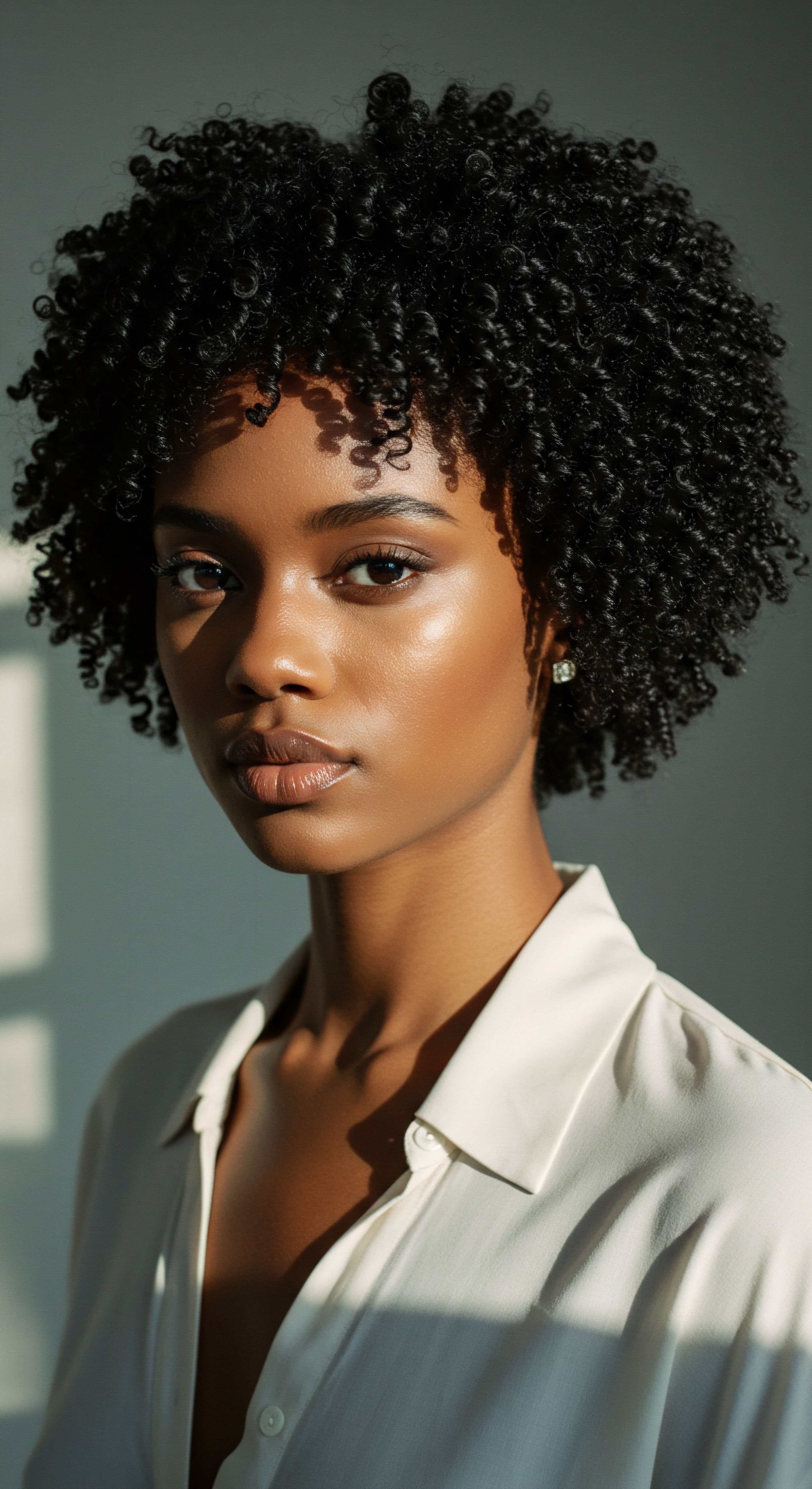
How Did Early Adornments Speak of Identity?
The symbolic language of head wraps was extensive, with variations in material, color, and technique communicating distinct messages. For instance, the richness of the fabric or the height of the wrap could indicate wealth or social prominence. Specific patterns might signify a woman’s lineage or membership in a particular guild. The deliberate crafting of these head coverings reflected a deep connection to community and a sophisticated understanding of non-verbal communication.
- Status ❉ The height or material of a wrap often conveyed social standing or wealth.
- Marital State ❉ Certain styles indicated whether a woman was single, married, or widowed.
- Spiritual Connection ❉ Covering the head was frequently a gesture of respect toward divine forces or ancestral spirits.
- Community Affiliation ❉ Distinct patterns or colors could identify a woman’s tribal or regional origins.

Head Wraps in the Diaspora
The transatlantic slave trade irrevocably altered the context of head wraps for Black women. Stripped of their traditional garments and forced into new, oppressive environments, enslaved women held onto the practice of head wrapping. Here, the meaning shifted, becoming a powerful act of resistance and self-preservation. Head wraps served as a means to maintain a semblance of dignity, to protect hair from harsh labor conditions, and to secretly retain a connection to an ancestry violently severed.
Laws like the Tignon Laws of 1786 in Louisiana, which mandated that Black women cover their hair, paradoxically reinforced the power of the head wrap. What was intended as a marker of subjugation became a canvas for defiant self-expression, with women using vibrant fabrics and elaborate styles to subvert the intent of the law.
Following emancipation, the head wrap continued its evolution. For some, it remained a daily practicality, a shield from the sun and dust of agricultural work. For others, it transformed into a statement of newfound freedom and self-determination.
The styles adapted, reflecting changing social circumstances, yet the core connection to heritage and resilience persisted. It became a quiet, yet potent, symbol of cultural continuity in the face of systemic efforts to erase Black identity.
| Historical Period Pre-Colonial Africa |
| Common Style/Use Elaborate, towering structures |
| Underlying Meaning Social standing, spiritual reverence, communal identity |
| Historical Period Slavery Era |
| Common Style/Use Simple, utilitarian coverings |
| Underlying Meaning Dignity, resistance, hair protection, hidden communication |
| Historical Period Post-Emancipation |
| Common Style/Use Varied, often modest or practical |
| Underlying Meaning Freedom, cultural continuity, personal adornment |
| Historical Period Early 20th Century |
| Common Style/Use Functional yet stylish; often for labor or home |
| Underlying Meaning Modesty, practicality, cultural memory |
| Historical Period Head wraps consistently served as a form of non-verbal communication and cultural preservation. |

Ritual
Stepping from the echoes of history into the vibrant hum of today, the head wrap assumes a new role, not merely as an artifact of the past, but as a living practice. It is a daily ritual for many, a deliberate act that bridges the practicalities of modern hair care with the deep cultural roots of self-adornment. This section explores the tangible ways modern head wraps serve contemporary Black women, moving beyond historical context to the immediate, lived experience of wearing them.
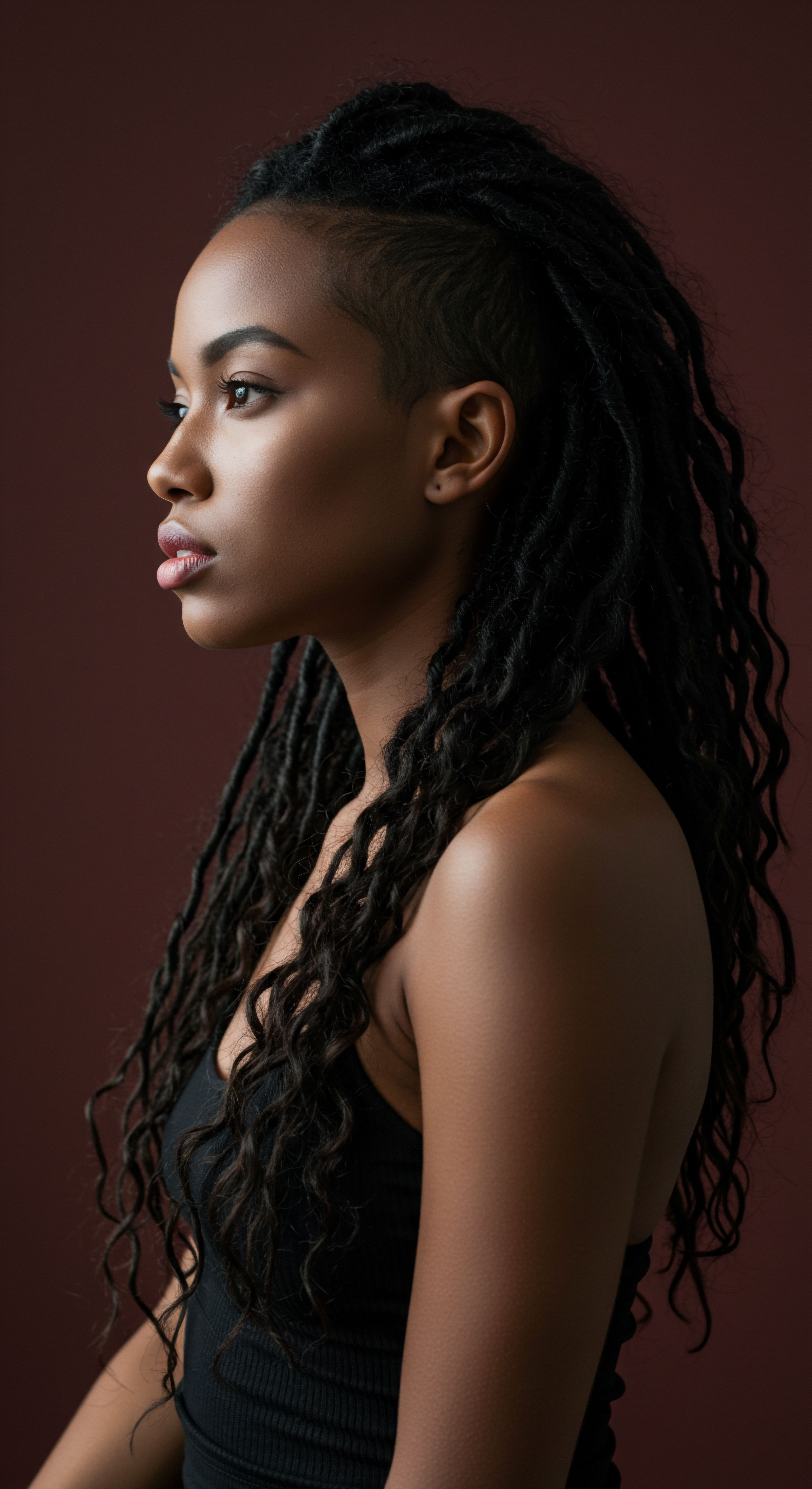
Daily Practices and Hair Wellness
One of the most immediate and widespread connections between modern head wraps and Black women’s hair care is their role in protective styling. Textured hair, with its unique structure, requires specific care to maintain moisture and prevent breakage. Head wraps provide a gentle shield against environmental aggressors like harsh winds, sun, and even the friction of daily life. They help to preserve intricate hairstyles, extend the life of a wash-and-go, or safeguard braids and twists, minimizing manipulation that can lead to damage.
The science behind this protection is straightforward ❉ by covering the hair, a head wrap reduces exposure to external elements that can strip moisture or cause mechanical stress. This is particularly valuable for hair that is prone to dryness. Many women choose silk or satin-lined wraps, recognizing these materials minimize friction and absorb less moisture from the hair, thus promoting healthier strands. This intentional choice of material speaks to a deep understanding of textured hair’s needs, a knowledge passed down and refined through generations of care.
Contemporary head wraps provide a dual benefit, offering both practical hair protection and a profound connection to heritage.

Do Modern Wraps Offer More Than Style?
Beyond the practical benefits of protection, head wraps in contemporary society serve as powerful tools for personal expression and style. The array of fabrics, patterns, and tying techniques available today allows for boundless creativity. A woman might select a vibrant print to reflect her mood, a subtle solid for a professional setting, or an elaborate arrangement for a special occasion. This stylistic versatility means the head wrap is not a uniform, but a dynamic accessory that adapts to individual preferences and the demands of modern life.
This artistic application of head wraps also speaks to a continuation of cultural aesthetics. The desire to adorn and beautify the head, present in ancestral African societies, finds its modern iteration in the diverse and imaginative ways Black women style their wraps. It is a creative outlet, a way to showcase individuality while simultaneously participating in a collective visual heritage.
- Protection ❉ Shields hair from environmental elements and reduces friction.
- Moisture Retention ❉ Helps keep hair hydrated, especially when lined with silk or satin.
- Style Preservation ❉ Maintains hairstyles, extending the time between washes or restyling.
- Versatile Adornment ❉ Offers endless possibilities for personal expression through fabric, color, and tying.

Choosing the Right Wrap
Selecting a head wrap often involves considering both aesthetic appeal and functional benefit. Materials like cotton offer breathability, while silk and satin provide a smooth surface that minimizes friction and prevents moisture loss. The size and shape of the fabric also play a role in the possible styles one can achieve. A long, rectangular wrap offers different tying options than a square scarf, allowing for diverse looks that suit various occasions and personal tastes.
The act of learning to tie a head wrap, whether through family instruction or online tutorials, also contributes to its ritualistic aspect. It is a skill, a practice, and for many, a quiet moment of self-care. This daily or occasional ritual reinforces the connection to a legacy of women who have similarly adorned their heads, creating an unbroken chain of tradition through conscious action.
| Material Type Silk/Satin |
| Key Benefit Reduces friction, retains moisture |
| Common Use Overnight protection, delicate styles, formal wear |
| Material Type Cotton |
| Key Benefit Breathable, absorbent |
| Common Use Everyday wear, casual styles, sweat absorption |
| Material Type Rayon/Viscose |
| Key Benefit Soft, drapes well, vibrant prints |
| Common Use Fashion statements, lighter coverage |
| Material Type Jersey Knit |
| Key Benefit Stretchy, comfortable, easy to tie |
| Common Use Beginner-friendly, snug fit, active wear |
| Material Type Material selection plays a significant role in both the functional and aesthetic aspects of modern head wrapping. |
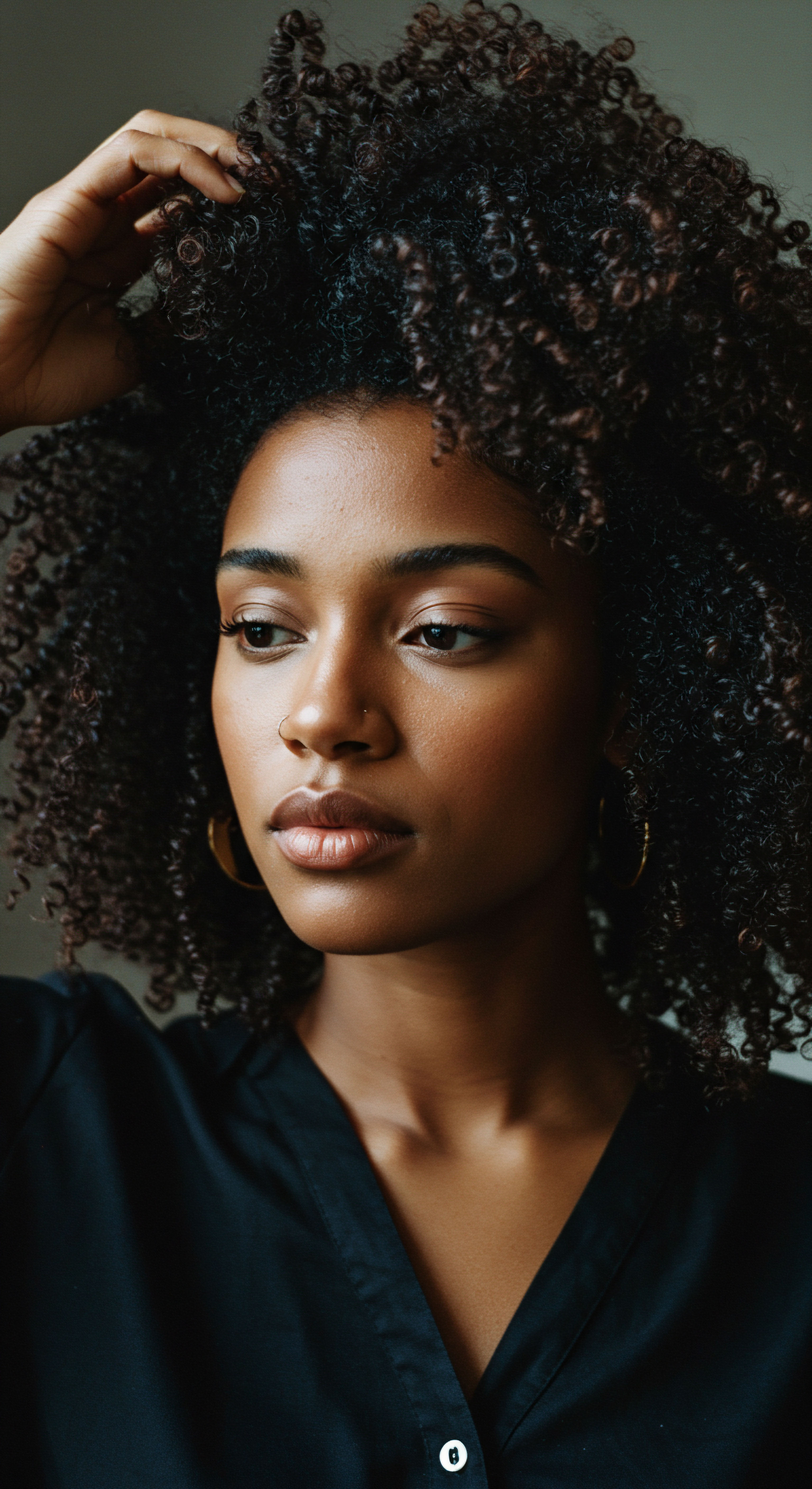
Relay
Beyond the personal and the practical, modern head wraps carry a deeper, resonant message, echoing through societal corridors and cultural dialogues. This section moves into the profound impact of head wraps as cultural statements, exploring their role in challenging norms, asserting identity in varied spaces, and fostering a global sense of belonging. Here, the scientific meets the social, and individual choice becomes a collective affirmation.

Head Wraps as Cultural Affirmation and Resistance
In contemporary society, head wraps serve as powerful symbols of cultural affirmation. They represent a conscious choice to honor ancestral traditions and express racial identity in a world that often pressures conformity. This choice is particularly potent in professional or academic environments where Eurocentric beauty standards have historically dictated norms. The presence of a head wrap in these spaces can be a quiet, yet undeniable, act of self-possession and cultural pride, asserting visibility and challenging unspoken rules of appearance.
The historical context of hair discrimination provides a stark backdrop for this contemporary affirmation. Research has consistently documented bias against Black women’s natural hairstyles in professional settings. For example, a 2020 study by Duke University and Michigan State University, titled “The Natural Hair Bias in Job Recruitment,” revealed that Black women with natural hairstyles were perceived as less professional, less competent, and less likely to be recommended for job interviews than Black women with straightened hair or White women with any hairstyle. This finding underscores the systemic pressures Black women face regarding their appearance.
In response to such documented biases, the head wrap can function as a protective layer, not only for the hair itself but also for the wearer’s psychological well-being, allowing for self-expression without direct exposure to scrutiny or judgment. It permits a woman to present herself authentically while navigating potentially biased environments.
The act of wearing a head wrap in these contexts becomes a quiet form of activism, a statement that one’s cultural heritage is not to be hidden or altered for external acceptance. It speaks to a reclamation of agency over one’s body and identity, aligning with broader movements like the CROWN Act, which seeks to outlaw discrimination based on hair texture and protective styles.
The modern head wrap functions as a vibrant declaration of cultural belonging, a direct response to historical and ongoing societal pressures.

How Do Wraps Connect Global Black Communities?
The head wrap also serves as a unifying element across the global Black diaspora. While styles and materials may vary from West Africa to the Caribbean, South America, and North America, the shared practice creates a visual commonality. This commonality fosters a sense of collective identity and solidarity among Black women worldwide. It is a recognizable signifier that transcends geographical boundaries, signaling a shared history, a common struggle, and a resilient spirit.
The internet and social media have amplified this global connection. Platforms allow Black women from different corners of the world to share styling techniques, showcase new designs, and discuss the cultural significance of their wraps. This digital exchange reinforces the idea of a living, evolving tradition, constantly adapting while retaining its core meaning. It demonstrates how a centuries-old practice continues to resonate with contemporary relevance, fostering community and cultural pride in the digital age.
- Assertion of Identity ❉ A visible declaration of Black heritage and pride.
- Challenge to Norms ❉ Pushes back against Eurocentric beauty standards in various settings.
- Psychological Shield ❉ Offers a sense of protection and authenticity in potentially biased environments.
- Global Connection ❉ Unifies Black women across the diaspora through shared cultural practice.
- Artistic Expression ❉ Serves as a canvas for individual creativity and cultural aesthetics.
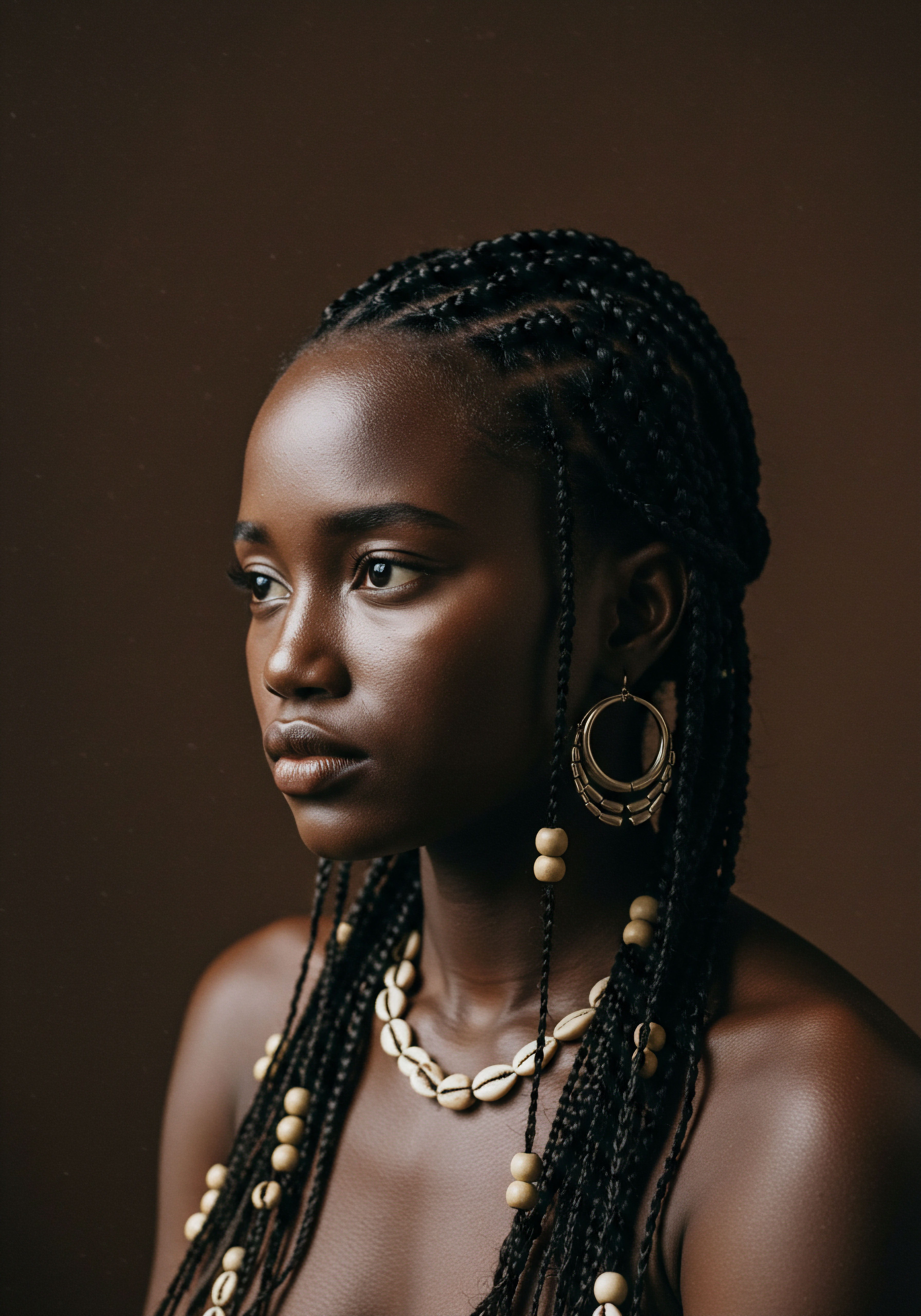
Head Wraps in Art and Social Movements
Beyond individual expression, head wraps have frequently appeared as powerful symbols in art, fashion, and social movements. Artists utilize them to convey messages of strength, beauty, and cultural resilience. Fashion designers incorporate them into collections, often drawing directly from African and diasporic traditions, further cementing their place as a significant cultural motif.
In social movements, particularly those advocating for Black liberation and racial justice, head wraps have been donned as emblems of solidarity and a visual commitment to ancestral roots and collective empowerment. This public display elevates the head wrap from a personal accessory to a communal banner, symbolizing collective identity and resistance.
| Dimension Identity Assertion |
| Manifestation Wearing cultural styles in formal settings |
| Impact Reclaims agency, promotes visibility |
| Dimension Anti-Discrimination |
| Manifestation Response to hair bias in workplaces/schools |
| Impact Subverts oppressive beauty standards, fosters psychological safety |
| Dimension Global Solidarity |
| Manifestation Shared styles and online communities |
| Impact Strengthens diasporic connections, reinforces collective heritage |
| Dimension Artistic & Activist Tool |
| Manifestation Featured in art, fashion, and protests |
| Impact Communicates powerful messages, symbolizes resistance |
| Dimension Modern head wraps are active participants in ongoing cultural and social dialogues. |

Reflection
The journey of the head wrap, from ancient African reverence to its contemporary presence, unfolds as a testament to the enduring spirit of Black women. It is a story told in fabric and form, a silent yet eloquent declaration of identity, resilience, and connection. Each fold, each knot, each vibrant pattern carries the weight of history and the promise of tomorrow.
This simple garment, passed through generations, continues to serve as a tangible link to a rich cultural heritage, adapting its meaning and function while remaining deeply rooted in its origins. It protects, it beautifies, and most significantly, it affirms a legacy that refuses to be silenced or forgotten.

References
- Byrd, Ayana D, and Lori L Tharps. Hair Story ❉ Untangling the Roots of Black Hair in America. St. Martin’s Press, 2001.
- Dabiri, Emma. Twisted ❉ The Tangled History of Black Hair Culture. HarperCollins, 2020.
- Johnson, T and Bankhead, T. Hair It Is ❉ Examining the Experiences of Black Women with Natural Hair. Open Journal of Social Sciences, 2014, 2, 86-100.
- Koval, Christy Z, and Ashleigh Shelby Rosette. The Natural Hair Bias in Job Recruitment. Social Psychological and Personality Science, 2020, 11(8), 1085-1093.
- Knight, Sol Maria Fernandez, and Wahbie Long. Narratives of Black Women on Hair in the Workplace. South African Journal of Psychology, 2019, 49(2), 205-215.
- Mbilishaka, Afiya M. Don’t Get It Twisted ❉ Untangling the Psychology of Hair Discrimination Within Black Communities. American Journal of Orthopsychiatry, 2024.
- Morsiani, Benedetta. Transcultural Body Spaces ❉ Re-inventing and Performing Headwrap Practice Among Young Congolese Women in London. African and Black Diaspora ❉ An International Journal, 2018, 11(3), 297-310.
- Rosado, Sybil Dione. Nappy Hair in the Diaspora ❉ Exploring the Cultural Politics of Hair Among Women of African Descent. Dissertation, University of Florida, 2007.
- Willson, Nicole Louise. Sartorial Insurgencies ❉ Rebel Women, Headwraps and the Revolutionary Black Atlantic. Atlantic Studies, 2022, 19(1), 86-106.